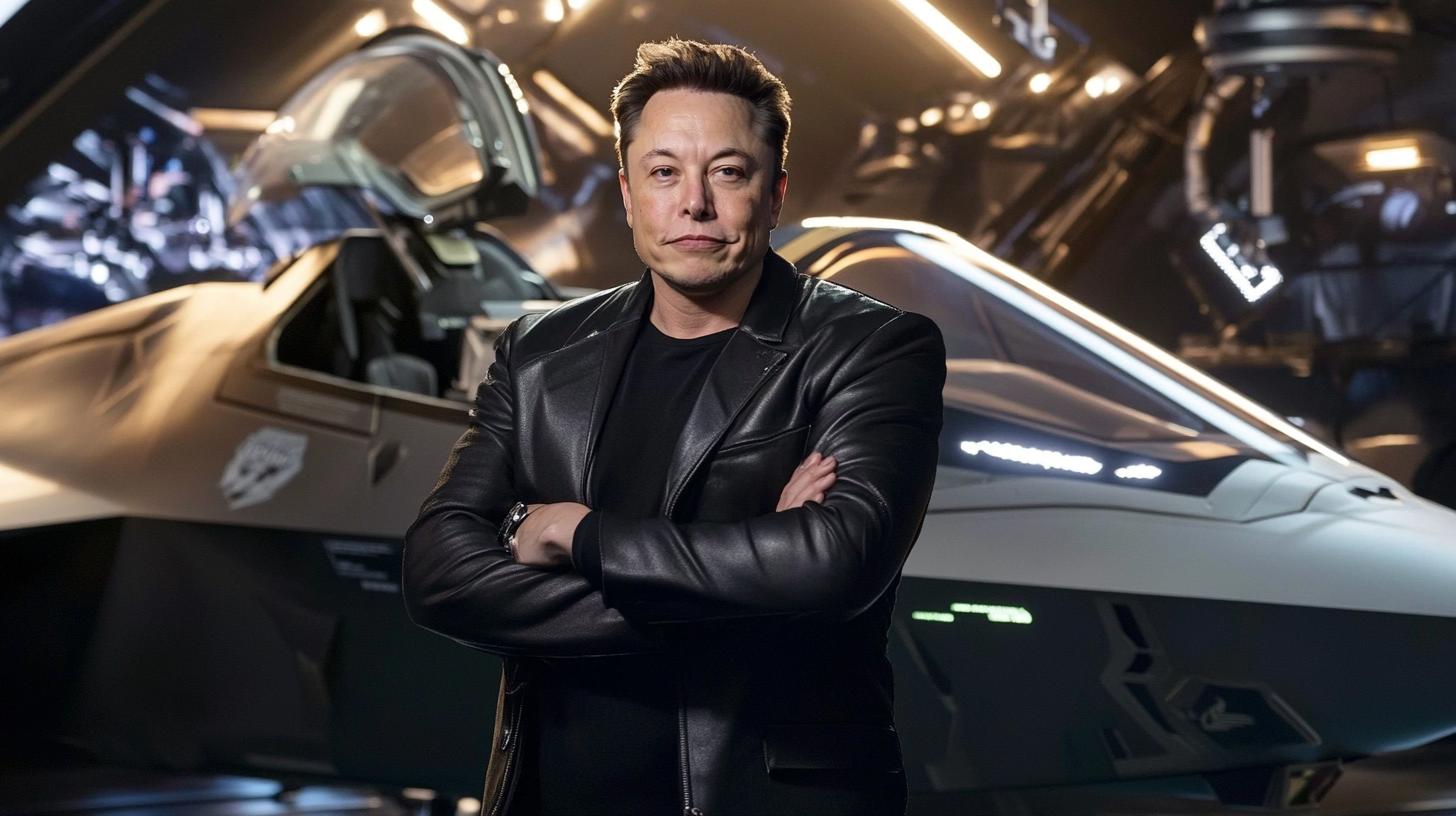From built-in rotors that enable vertical takeoff and manual landing, eliminating the need for traditional routes, to super-fast speeds that dramatically reduce travel time, and from energy-efficient batteries that enable short-distance travel to its sleek, futuristic aerodynamic design, Tesla’s autonomous plane is poised to revolutionize aviation.

The great revelation
Musk recently revealed this groundbreaking project, capturing the public imagination. During a Hyperloop event, Musk teased the next big thing: an electric, autonomous jet. “I imagine an electric plate taking off and falling vertically,” Musk said, succinctly summarizing his vision. While the comment was fleeting, it was enough to spark global interest, especially given Musk’s focus on reducing emissions across all industries.
It wasn’t long before reports emerged that Tesla, along with engineers from SpaceX, had secured $33 billion in funding to develop automated autonomous flight technology. This funding underlines the seriousness of the project, aiming to usher in an era where humans will fly over cities and cohabit places without a pilot. What seemed like science fiction is quickly becoming reality.
What makes Tesla’s plane different?
The autonomous aircraft incorporates several key features that set it apart:
Vertical Takeoff and Landing (VTOL): Built-in rotors allow the aircraft to take off and land unhindered, enabling operations in sparsely populated areas.
Super-Fast Speeds: Capable of significantly reducing travel times, the jet represents the next generation of high-speed air travel.
Energy-Efficient Batteries: Tesla’s expertise in battery technology ensures the aircraft’s ability to cover long distances without refueling.
Aerial Flight Technology: AI and advanced sensors enable fully automated navigation, reducing the risk of human error.
The technology behind this
Tesla’s bet on aviation draws on the expertise of engineers from Tesla, SpaceX, and a startup called Reliable Robotics. Reliable Robotics, founded by former Tesla and SpaceX engineers Robert Rose and Jürg Freffel, has already made significant progress in autonomous aviation. The company successfully demonstrated fully automated flight using a FedEx-owned Cesspa 208 Caravan turboprop aircraft in 2021. This milestone proved that autonomous flight technology could operate safely, even in sparsely populated regions.
Rose, who previously worked on Tesla’s autopilot program and SpaceX’s flight software, said: “Aviation is much better understood than driving. My desire to see airplanes fly themselves inspired me to put together a team to bring this vision to life.” Reliable Robotics started with small cargo planes, integrating autonomous systems into existing aircraft. These systems required minimal pilot intervention and proved reliable in a variety of coordinations.
Why are autonomous aircraft viable?

Unlike self-driving cars, which must navigate complex and predictable roads, self-driving aircraft operate in controlled airspace with set, less variable routes. Greg Raychaï, partner at Eclipse Vehicles, explained: “Self-driving aircraft are a more achievable problem compared to self-driving cars. In the air, there is controlled airspace and an open regulatory agency to deal with, such as the chaos of streets and traffic.”
This controlled environment makes autonomous aviation a promising frontier for innovation. Reliable Robotics’ success with cargo aircraft demonstrates that the technology is already viable and scalable.
Implications for industry
Tesla’s attempt to boost autonomous aviation has far-reaching implications:
Economic savings:
Advanced technology could save airlines billions of dollars by reducing the need for pilot salaries and increasing operational efficiency.
Safety improvements:
Humidity errors are responsible for more than 70% of aviation accidents. Automated systems can react faster and more reliably than humming pilots, reducing risks.
Environmental benefits:
Electric venues powered by renewable energy could dramatically reduce emissions, in line with global sustainability goals.
Competition with established companies:
Companies like Boeing and Airbus are already investing in autonomous technology. Tesla’s attempt raises the stakes, potentially accelerating innovation.
Challenges ahead
Despite its potential, autonomous aircraft face several obstacles:
Regulatory approvals: Strict FAA regulations must be met, requiring extensive testing and certification.
Public perception: Convincing passengers to trust pilotless aircraft will take time.
Infrastructure needs: Charging stations and maintenance facilities will need to be built to support widespread adoption.
The road ahead
With a $33 billion investment and a visionary team, Tesla is well positioned to bring its self-driving plane to market. While challenges remain, the company’s track record of disrupting industries suggests that success is not only possible, but likely.
If Tesla is successful, this innovation will redefine air travel, making it faster, safer and more sustainable. The future of aviation is on the horizon and it is electric.





